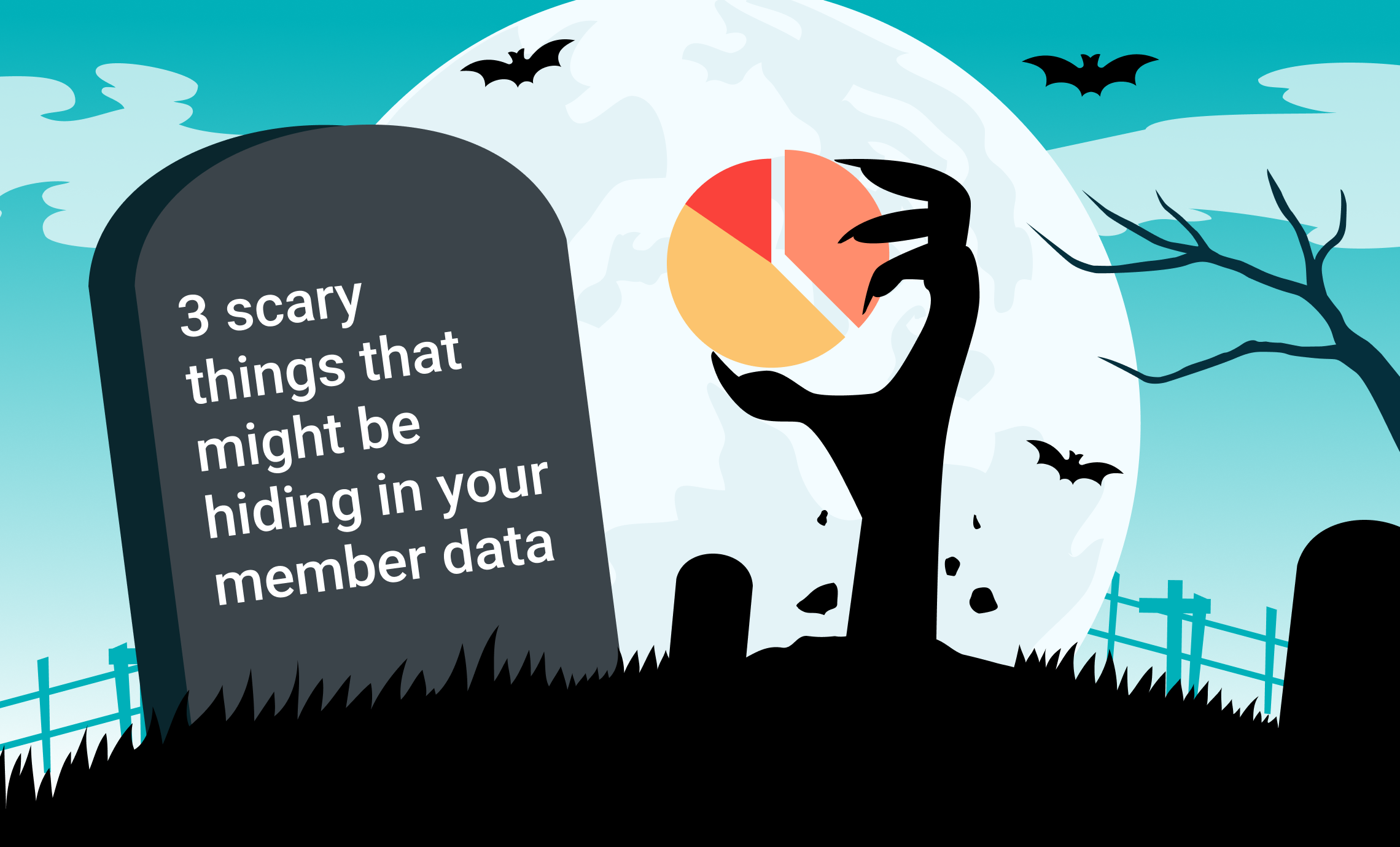“Progress is impossible without change, and those who cannot change their minds cannot change anything.” —George Bernard Shaw
When organizations have the notion to update or change their membership management software, the idea can often be met with skepticism or outright opposition from others in the organization.
Resistance to change is human nature, but that doesn’t mean it’s OK. The power of broadband Internet is presenting opportunities that weren’t available even five years ago, and without serious consideration and the ability to adapt, organizations can be left in the dust. When streaming movies and TV shows over the Internet became a possibility, Blockbuster didn’t take the technology seriously or act quickly enough, and then proceeded to basically go out of business.
Association management is in a similar situation, at least in regard to the technology available. It’s much easier to process payments, securely and automatically, online now. Online behavior can be used to provide context for membership marketers to create relevance for prospective members. Customer support is on the verge of a serious overhaul with the addition of chatbots and automation.
But, of course, none of these incredible things can take place if your organization is harboring a stubborn approach to change.
The opposition to change, in terms of member management software, can come from a lot of different places; some will balk at the cost, others will disdain the effort required to implement a new system, and there can even be a political argument against switching.
When a change is obviously necessary, the first step isn’t researching new AMS software or scheduling demos—it’s managing a culture of change at your organization. In a perfect world, there would be no obstacles or challenges when making company-wide decisions. Since the world we live in and the organizations we work for are usually not perfect, we strongly suggest that you expect some pushback along the way to introducing a change in your membership system and prepare for it.
Want to read more about the art of persuasion during the software selection process? Check out our new eBook: How to Subtly Push for Change When It’s Obviously Time for an Upgrade
Here are a few tips for managing change in your organization when adopting a new membership management software solution.
So Why Change Membership Software?
If you’re ready for a change in software, the first question you’ll have to answer is why. Do any of these sounds familiar?
- Why do we need to change? The staff likes our current system.
- Why do we need to change? New software isn’t in the budget.
- Why do we need to change? Let’s use our system for another couple of years.
Notice anything missing from these common objections?
Any mention of your members.
Frankly, you can’t afford to do nothing because your membership expects continued excellence. And just to be clear, your members may not explicitly ask for all the great things advanced membership software can offer them, but they’ll show you with their lack of renewals.
Modern membership management systems have new ways to create relevance, and therefore delight, for your members that didn’t exist several years ago. The ability to connect the dots with data and offer context and experiences is the secret sauce that keeps members engaged and happy with your organization.
While member satisfaction should probably be your primary reason for upgrading your system, there are plenty of other areas where it can help, but also receive pushback.
Optimizing internal communications (and cutting down on email!) can be a huge benefit to your organization through driving efficiency. What used to be a 20-minute phone call can now be a few clicks. What used to be an afternoon of work from two different departments of pulling data and compiling reports can now be done automatically.
One of the most common pushbacks to switching software is that you’ll have to retrain your staff on how to use it. In the long-term view, however, a few hours of training pales in comparison to the hours, days, or even weeks of work you’ll save by automating redundant tasks and streamlining communication.
Cost falls under this same umbrella. How can you balk at the cost of the new system when the savings, in terms of resources and employees time, can easily be factored into the investment?
Either way, being prepared for common obstacles on the road to software migration is key to the process.
What to Consider in Preparation
Have you ever thought why, specifically, you need to migrate to a new system? Do you have it written down? Did you consider the needs of your membership base, the board, and all of the other staff members and departments that will be affected?
We don’t intend to be harsh, only to make a point—looking at the entire picture, not just your own desire to switch, is the key to preparing a case for a software change.
Here are a couple ways to organize your research and create a compelling argument.
Document pain points: This should be a fairly obvious step, but the more you can detail about each issue, the better. Be sure to write everything down and organize it. Don’t forget to go to other departments and find out what their top pain points are—you might be surprised! Keep in mind, however, that not all pain points can be solved with software when compiling your list. Be selective at which to include.
Present the inefficiencies: While this may sound simple, this step can be a lot harder than you think. The first reason is that when providing a negative report about what’s wrong with the current system, you may be stepping on toes, so be mindful of that. The second reason is that inefficiencies can be hard to find—not all are visible issues with the software due to the organizational processes that have been built to cover them up.
If you want more information about finding hidden inefficiencies, check out our recent eBook: How to Subtly Push for Change When It’s Obviously Time for Upgrade.
Provide examples of other solutions: One glaring reason your organization might not want to upgrade is that they don’t know what’s possible. Reach out to other organizations and find processes you admire or services you enjoy. A quick way to do this is just to sign up for a few email lists of other organizations—if they have an onboarding process or marketing approach that you like, note it down as a possibility. Or better yet, extrapolate into how your organization could use a similar process.
By taking a broad approach to all possible considerations, you’ll have your bases covered and be able to present a thoroughly researched proposal for upgrade.
How to Approach the Situation
Just like in golf, the approach to suggesting a change in membership management software is essential to the success. As discussed earlier, running up to your board and demanding a change to make your job easier probably isn’t the best approach!
No, the ideal approach is an organized, fully researched, and data-backed proposal based on member satisfaction and organizational efficiencies. Here’s a sample format to help you tell the story in a logical order.
1. Demonstrate the inefficiencies
Even if the issues with your current system are apparent to you, it may not seem that way to your executive team and coworkers. From earlier, you should have a decent-sized list of your current inefficiencies. You want to put this at the beginning of your report to catch attention—nobody likes the idea of an inefficient system operating right under their nose.
2. Present the research
Next, show that you’ve done your research. You should have a stack of competitor analysis, what they’re doing right, and processes that you feel are better than your own.
3. Identify the life expectancy of your current solution
Create a sense of urgency by attaching a deadline to your plan for an upgrade. Feel free to loop in your membership renewal dates to increase the immediate need for a solution. Without a timeline, these types of projects have a habit of getting put on the back burner.
4. Define functional requirements
Now that you’ve laid the groundwork, state your case in terms of specific needs. For example, you may want to break it down by department—for example, the finance department needs integration with a specific software, the marketing department wants the ability to pull reports on their own, etc. With a list of features in hand, you’re now in a great position to go software shopping—if you haven’t already. 😉
With your approach all buttoned up, it’s time to…
Put It All Together
With your research done, organization in place, and coffee consumed, it’s time to present your case for an upgrade to a new membership system! This should be the fun part, where the fruits of your labor will finally be revealed, but presentations can be nerve-wracking, not to mention somewhat draining to put together.
Important: One glaring issue that a lot of people tend to neglect when crafting their presentations is the psychology behind change management. The need for change must be fundamentally understood, and the execution of the change must be viewed as an internal process; not something that happens to an organization (from an external source) but rather occurs from within an organization.
If you really want to rock your presentation, we’ve put together a template for a slide deck specifically for pitching membership system upgrades!
Feel free to grab it for free here.
Along with a clean, modern design, this template is outfitted with the structure used in successful software pitches from all sorts of member-based organizations. Please feel free to use the preloaded notes and prompts to increase the persuasiveness of your presentation. There’s no need to re-invent the wheel.
If you have any trouble downloading the business case template, please don’t hesitate to contact us at Aptify and we can send it to you directly.
Follow Through
Assuming everything goes well, and even if it doesn’t, a project like this requires the appropriate follow up. After all, who’s going to lead the charge on vendor selection, employee training, and member communications.
If approved, one of the first things you’ll need to do is evaluate the available software vendors for member management systems. As it turns out, there are a lot more steps to a large-scale membership management software migration or implementation. You’ll need to select your team, set expectations, and build your timeline. If you need assistance with that, we’ve created an incredibly thorough guide to research, implementation, and analysis—grab the guide here.
It’s a tall task to get everyone at your organization, from IT to HR, involved sufficiently in the process of migrating to a new software system. Your time and consideration during the follow up can make or break the implementation, or at least make it go a lot smoother.
Additionally, if the change is not approved, don’t let the entire project die. Maintain your list of issues and check in on them every few weeks. For instance, if you have found an issue that’s actually bleeding money, it would be wise to quantify that over time. This isn’t to say that you need to run into the office of your boss every week yelling “I told you so!” but keeping your own records might be useful in the future if your company ever reconsiders.
We hope that you find these tips useful when considering a change in membership management software. There are a lot of different angles to consider when going through this process, and getting started is one of the trickiest parts!
To help you gain some momentum in the beginning, we wrote a detailed guide about how to politely yet firmly suggest it’s time for a change, and you can download it for free! Click here to download the guide: How to Subtly Push for Change When It’s Obviously Time for an Upgrade.


